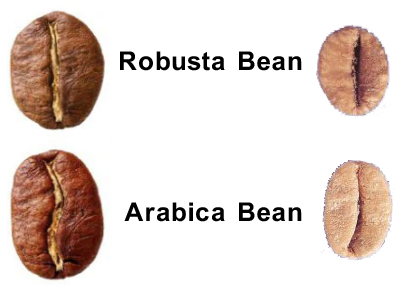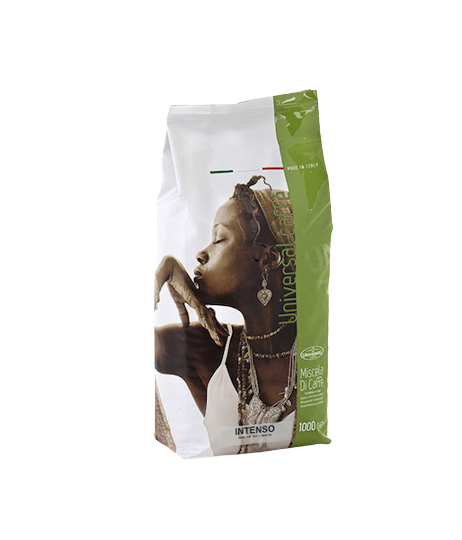If you’re in the business of coffee, you understand that crafting an exceptional cup goes beyond brewing techniques. It begins with the very essence of your beans—their roast. Whether you run a bustling café or are venturing into the world of coffee roasting, knowing your roasts is paramount. After all, it’s the roast that transforms a humble green coffee seed into a rich, aromatic delight.
Picture this: a green coffee seed, mild and grassy in flavor, waiting to reveal its true potential. Enter the roasting process—a dance of heat and transformation. As the beans turn from pale green to a deep, inviting brown, their acidity mellows and their flavor profile evolves. But here’s the secret: the magic lies not only in the duration of the roast but also in the varietal and the land it hails from. You can read more information about coffee bean characteristics here.
Now, let’s start with demystifying the four main categories that define coffee roasts: Light, Medium, Medium-Dark (Dark), and Dark (Extra Dark). Each has its allure, from delicate floral notes to robust smokiness. So, whether you’re curating your café’s menu or embarking on a roasting adventure, join us as we explore the artistry behind these roasted coffee beans. ☕
What Happens When Coffee Beans Are Roasting?
Coffee cherries contain seeds, known as coffee beans. Before roasting, these beans are green and smell faintly of earth and grass. Roasting transforms them into the coffee we enjoy.
This process toasts the beans, darkens their color, and infuses them with chocolate and caramel flavors. As the heat rises, oils surface on the beans. At 401 °F (205 °C), the beans crack and expand. A second crack occurs around 437 °F (225 °C). High-quality beans never roast beyond 482 °F (250 °C) to avoid a burnt taste.
Roast names and descriptions vary in the coffee industry. This variation can make choosing beans challenging. However, the bean’s color and taste usually indicate the roast level.
Researchers have found over 800 flavorings in roasted coffee beans. These flavors emerge during roasting.
Roasting is dry heating without water or fat, similar to roasting nuts. You can roast coffee beans in a pan or on a baking tray. However, to fully develop the flavors, you need to control the heat carefully. This is the art and science of coffee roasting.
Comparison of 18 Roast Coffee Bean Varieties
| Common Names | Roast | Color | Temperature (at peak) | Flavor Profile |
|---|---|---|---|---|
| 1. Blonde Roast | Light | Lightly toasted | ~375 °F (190.56 °C) | Quite sour and acidic, and citrusy. |
| 2. New England Roast | Light | Lightly toasted | ~400 °F (204.44 °C) | Slightly closer to medium roast, bright, delicate, and fruity. |
| 3. Light City Roast | Light | Very light brown | ~375-400 °F | Bright, delicate, and fruity. |
| 4. Half City Roast | Light | Light brown | ~415 °F (212.78 °C) | Fruity, and flowery. |
| 5. Cinnamon Roast | Light | Very light brown | ~350 °F (176.67 °C) | Sour and citrusy flavor, floral and grassy. |
| 6. Regular Roast | Medium | Medium brown | ~430 °F (221.11 °C) | More balanced flavor and aroma |
| 7. Breakfast Roast | Medium | Toasty-brown | ~430 °F (221.11 °C) | Moderately acidic but still balanced. |
| 8. American Roast | Medium | Chocolatey brown color | ~410 °F (210 °C) | Balanced mouthfeel and clear notes of the coffee. |
| 9. City Roast | Medium | Chocolatey brown color | ~425 °F (218.33 °C) | Complex, warming, and familiar. |
| 10. Full City Roast | Medium-Dark (Dark) | Rich cocoa brown. | ~440 °F (226.67 °C) | Chocolate, caramel, hazelnut, or toffee. |
| 11. Continental Roast | Medium-Dark (Dark) | Deep brown | ~440 °F (226.67 °C) | Smoky, caramel-like body. |
| 12. New Orleans Roast | Medium-Dark (Dark) | Medium-dark brown | ~440 °F (226.67 °C) | The flavor of dark coffee. |
| 13. High Roast | Medium-Dark (Dark) | Dark brown | ~445 °F (229.44 °C) | Chocolate, caramel, and comfortable for daily drinking. |
| 14. Vienna Roast | Medium-Dark (Dark) | Dark reddish-brown | ~445 °F (229.44 °C) | Lighter than both French and Italian roasts |
| 15. European Roast | Dark (Extra Dark) | Dark reddish-brown | ~465 °F (240.56 °C) | smooth and has a low acidity and undercurrents of dark chocolate. |
| 16. French Roast | Dark (Extra Dark) | Dark brown | ~470 °F (243.33 °C) | Intense, smoky, and bittersweet. |
| 17. Italian Roast | Dark (Extra Dark) | Purplish-black | ~475 °F (246.11 °C) | Strong smoky and dash of sweetness. |
| 18. Espresso Roast | Dark (Extra Dark) | Dark brown | ~450 °F (232.22 °C) | Intense, concentrated, and full-bodied. |
Related post: 10 Essential Coffee Certifications: A Beginner’s Guide.
Roasted Coffee Bean Types
Coffee, our cherished bean, falls under the Rubiaceae family, a large group with over five hundred genera and around six thousand species. Known scientifically as Coffea, it’s one of the many species within this family. Although the Rubiaceae family includes all seed-bearing plants as coffee plants.
Commercially, the world grows two primary coffee bean species: Coffee Arabica and Coffee Robusta. Their differences lie in their growing environments, flavor, and price. Two less common types, Liberica and Excelsa, contribute to about 2% of the world’s coffee supply and rarely feature on café menus.
Arabica and Robusta beans are the mainstays of commercial coffee production. They differ in taste, growth location, and caffeine content. Robusta beans contain twice the caffeine of Arabica beans. Arabica beans offer a milder, more aromatic taste, while Robusta beans have a stronger, more distinct flavor. Arabica beans are flat and oval, while Robusta beans are rounder. You can distinguish them by their color when they’re still on the plant, as Arabica beans are a darker green than Robusta beans.
Arabica beans thrive in the subtropical climates of Central and South America, while Robusta beans grow in Central and West Africa and Southeast Asia, which have less rainfall and lower altitudes. Arabica, which makes up over 70% of the world’s coffee, is generally considered the higher quality bean. Robusta coffee is known for its woody and earthy flavors. While you’re unlikely to find a roasted coffee blend that is 100% Robusta due to its high caffeine content and strong taste, many high-quality Robusta blends on the market offer great flavors when mixed with Arabica beans.

If you want to know more about coffee blends, check out our blog ‘Choosing Best Coffee Brand & Blend for Business — Buyer Guide’.
Arabica & Robusta Beans Characteristics and Differences
| Price | Arabica beans are twice as expensive as Robusta beans. |
| Farming | Robusta, easy to farm and high-yielding, resists insects due to its caffeine content, which is toxic to bugs. |
| Look | Arabica beans are oval, while Robusta beans are rounder. |
| Plant | Arabica typically reaches 2.5-4.5 meters, while Robusta grows to 4.5-6 meters. |
| Chlorogenic Acid | Robusta beans, with a chlorogenic acid content of 7-10%, often have a more pronounced bitter taste due to higher CGA levels, compared to Arabica beans which contain slightly lower CGA levels of 5.5-8%, affecting the overall flavor profiles. |
| Cultivation | Arabica makes up about 75% of global coffee production, with Brazil as its largest producer, while Robusta accounts for the remaining 25%, primarily produced in Vietnam. |
| Caffeine | Robusta beans have twice the amount of caffeine as Arabica beans |
| Growing Altitude | Arabica beans are grown at high altitudes above 800m, while Robusta beans are cultivated at lower altitudes between 200m – 800m. |
| Taste Profile | Robusta often has a strong smell and harsh flavor due to its higher caffeine content, which imparts a bitter taste, making it less pleasant than the milder and balanced flavor of Arabica |
| Sugar Content & Lipid | Arabica, containing nearly 60% more lipids and double the sugar concentration compared to Robusta, likely contributes to its preferred taste. |
If you’re considering purchasing a coffee machine or seeking more insights about it, check out our guide: How To Choose The Best Coffee Machine: Tips And Considerations.


